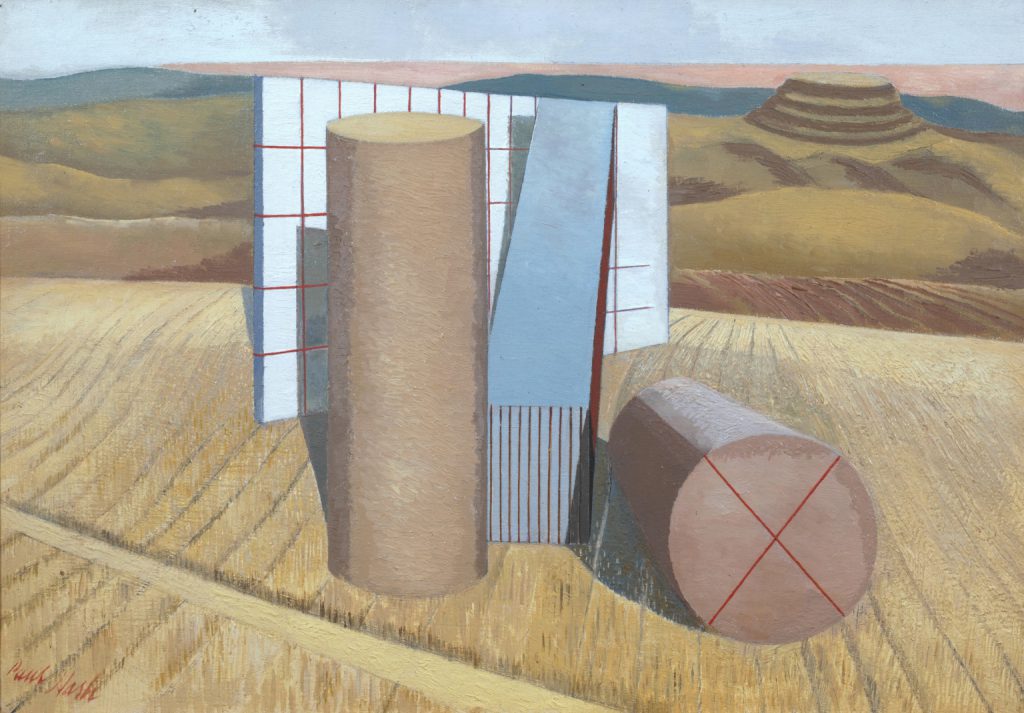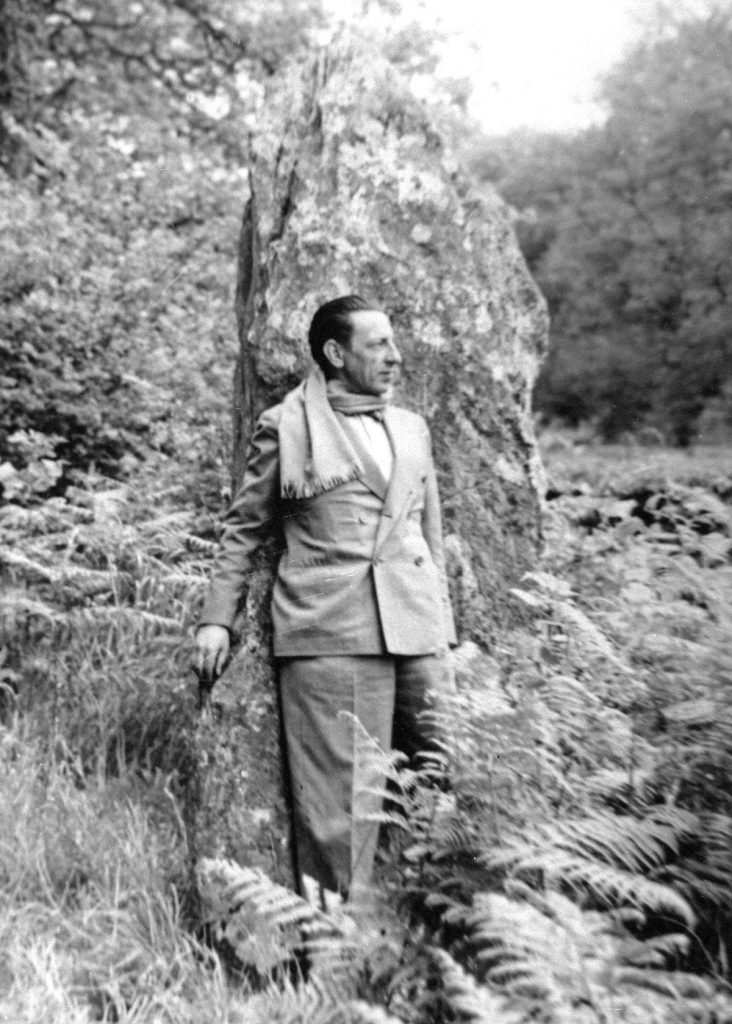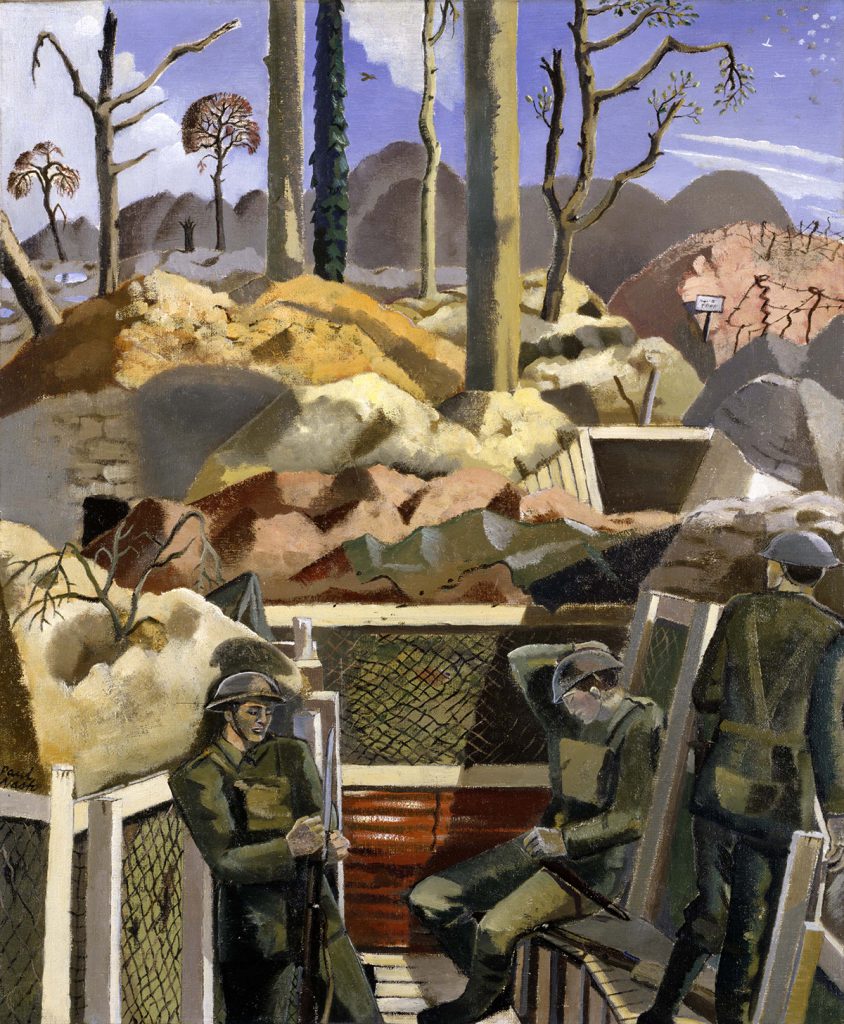
Tate Britain is currently hosting a major retrospective exhibition of the work of the artist Paul Nash (1889-1946) which runs until 5th March 2017.
Paul Nash is often thought of as an essentially English artist but between the wars he also sought to champion the hope embodied in continental modernism, defending Picasso and experimenting with abstraction before embracing Surrealism. These themes are to the fore of Tate’s exhibition.

Nash was drawn to objects sculpted by nature and had what some have described as an overriding habit of metaphor. Trees, for example, could take on the character of stones. This serves to highlight the poetic nature of his painting and how firmly rooted he was in the English tradition. Indeed, his earlier work is influenced by the 19th century English Romantic tradition of William Blake (who like Nash lived in Sussex), Samuel Palmer and Dante Gabrielle Rossetti. With this in mind, you could forgive John Piper for including one of Nash’s paintings in his 1943 book ‘British Romantic Artists’. Nash was less than pleased. It was the word ‘romantic’ which bothered him and he referred, instead, to the ‘poetic’. Certainly, as an artist he returned again and again to the poetry of the English landscape. He sought to look beyond the immediate to what he referred to as the ‘genius loci’, the spirit of the place, to ‘a reality more real’.
These qualities are apparent in the works on display at Tate.
The exhibition holds in tension, but fails to make explicit, the particularly English quality in Paul Nash’s paintings – the ability to embrace the modern and the future with a quality of optimism and hope whilst keeping an eye fixed firmly on the past.
His palette and subject matter is firmly rooted in the English watercolour tradition of the 18th and 19th centuries.
In ‘Equivalents for Megaliths’, painted in 1935, Paul Nash displays his enduring fascination with the mystical qualities of inanimate objects. The ancient megaliths, standing stones, are abstracted in geometric forms drawing inspiration from the stones at Avebury, on the Wiltshire Downs.

Paul Nash served as a soldier in the trenches of the Great War. He subsequently worked as a war artist on the Western Front between 1917 and 1918 and again during the Second World War. ‘Spring in the Trenches, Ridgewood’ was painted in 1917/1918. It is one of many works in the exhibition which highlights Nash’s powerful, uncompromising and often lyrical depictions of the harsh realities of war. As is typical of Nash, in the devastated landscape behind the figures and trench there is hope as a tree comes into bud and birds fly in the rich blue sky which contrasts with the earth hues in the rest of the composition.
With so many superb works on show this Paul Nash retrospective at Tate Britain is a must see to start your year. It runs until the 5th March 2017. For more information go to www.tate.org.uk.
Closer to home Pallant House Gallery in Chichester has a marvellous collection of paintings, wood engravings, etchings, photographs, collage and illustrated books by Paul Nash including many from the Clare Neilson Gift.
By Rupert Toovey, a senior director of Toovey’s, the leading fine art auction house in West Sussex, based on the A24 at Washington. Originally published in the West Sussex Gazette.